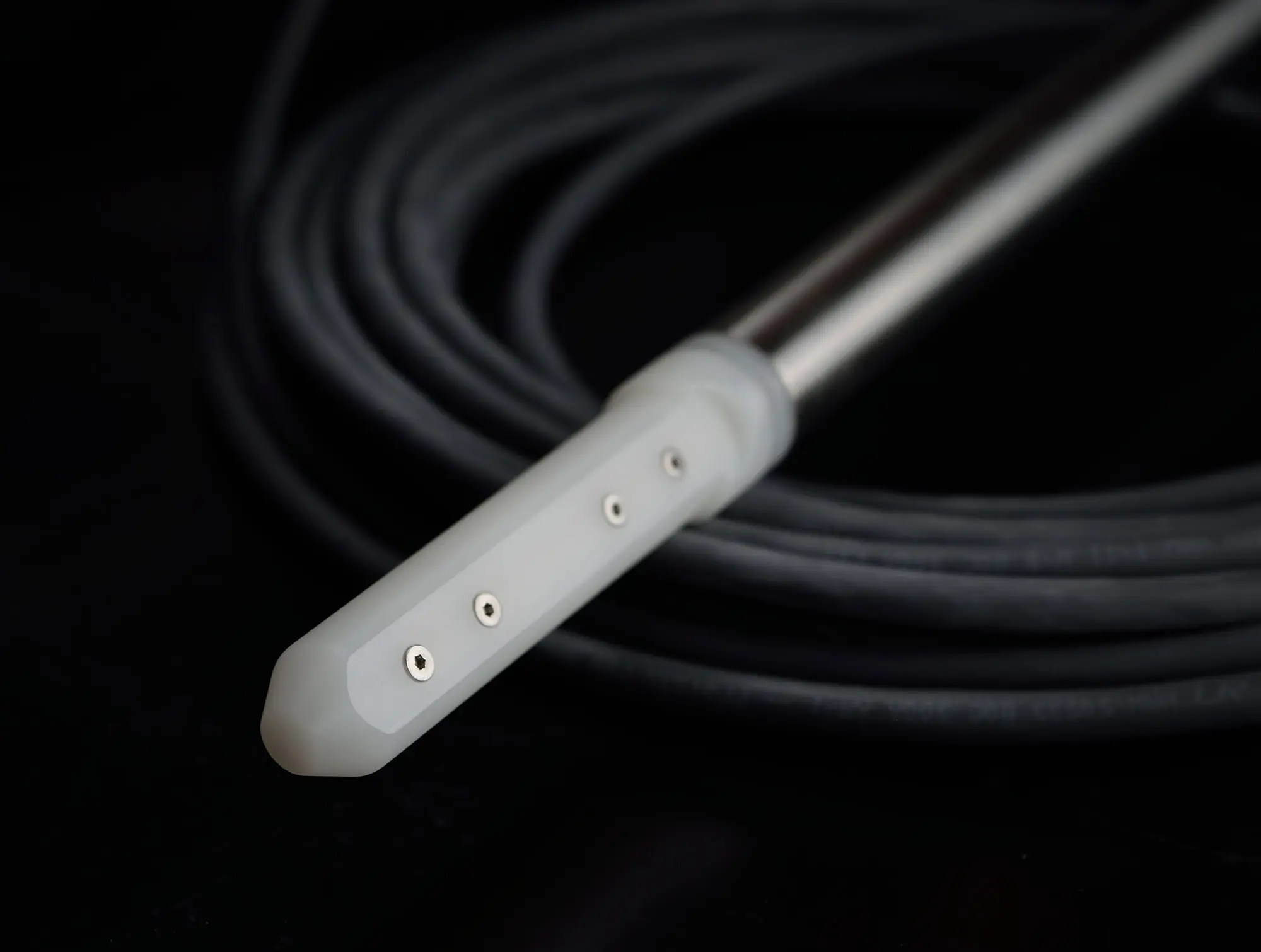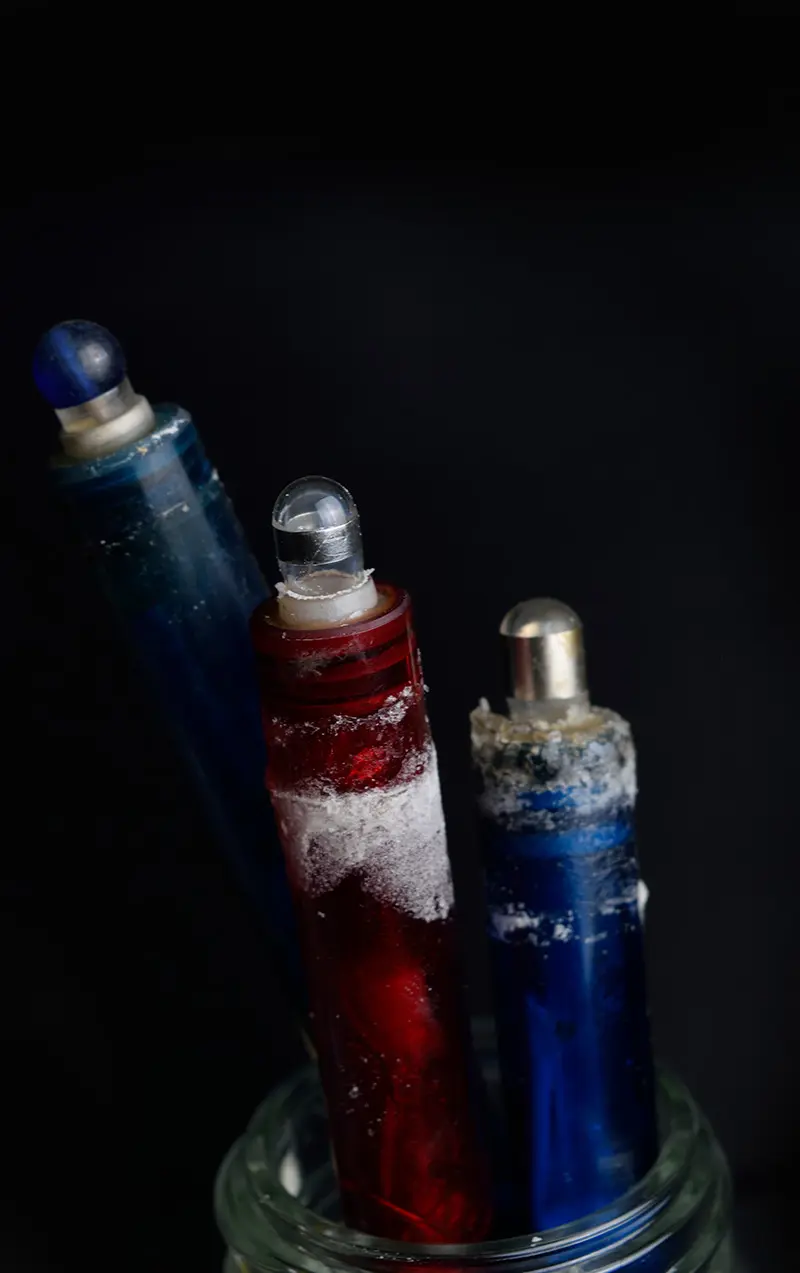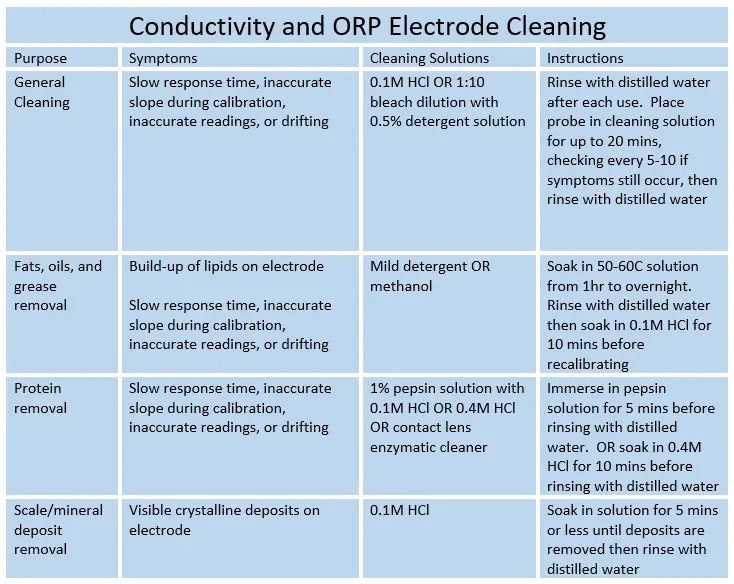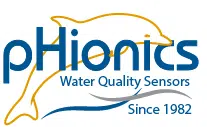ORP and Conductivity Electrode Care and Troubleshooting
Electrode care is required consistently to ensure an accurate reading for any application, but the frequency of cleaning varies dramatically. The best way to determine a cleaning schedule is by calibrating on first use then checking frequently with a standard. Once the measurement is out of acceptable range, then record how long that took and recalibrate. Use the recorded time as a baseline and reduce frequency of calibration checking. The concepts and cleaning solutions are applicable to most brands and types of electrodes and sensors but best practices may vary depending on the manufacturer. pHionics-specific procedures are noted.
For conductivity, calculate the slope and offset to determine how healthy the electrode is. Please see our Sensor Calibration article if you are unsure how to find the slope and offset.
Often, ORP only uses one calibration buffer because it is a general reading. Slope and offset cannot be calculated from a single point, so the best means of checking electrode health is by paying attention to how stable the reading stays in a calibration solution. The electrode will drift faster as the electrolyte is used up, and it is up to the user to determine when that drift becomes unusable.
The rest of this article will go over the best methods of cleaning depending on the type of contaminant present on the electrode.

Freshly cleaned STs Series Conductivity sensor.
Diagnosis Steps
- Check the electrode, housing, inner connectors, and all associated cables for signs of wear or damage. This may require disassembly to check the connectors for oxidation. Procedures can be found in Section 2.3 of the pHionics STs Series™ Device Manual. The cable and electrode are fully replaceable for pHionics products so please contact us to order replacements if oxidation or damage does occur.
- ORP Specific – Check the electrolyte level in the reference cell for fill level. To see the electrolyte level in pHionics STs Series™ ORP, remove the electrode by following the steps in Section 2.3 of the Manual or watch our Electrode Replacement video. Once the electrode is fully visible, hold it up to the light to verify there is at least ½” (1.27cm) of reference electrolyte remaining. A low level will prevent proper electrode function and is a sign that the electrode requires replacement.
Inflow from sample could dilute the reference solution and make it appear full when it is not. To verify the quality of remaining electrolyte, clean the electrode using the methods in the table below then calculate the slope and offset. If the offset is outside of acceptable range, then the electrolyte is likely diluted and reaching the end of its lifespan. The electrode can still measure accurately but drifts faster and requires more maintenance until replaced.
Mechanical Cleaning
pHionics ORP and conductivity electrodes are robust and will not be damaged by mechanical means of cleaning such as brushing. This may not apply to products made by other manufacturers.
Procedure
1. Add a detergent such as hand soap to water and dip a soft-bristle brush in the solution.
- Fine wet sandpaper or fine steel wool may also be used.
2. Scrub the electrode vigorously until no signs of contaminant remain.
- For ORP electrodes – Focus on cleaning the platinum bands toward the tip of the electrode and avoid brushing so hard that the bulb breaks. They are durable but not indestructible. If using sandpaper, attempt to only abrade the platinum band.
- For conductivity electrodes – Focus on the four round cells on the electrode and use a brush to clean the inside of the electrode guard. Make sure the plastic along the flat of the electrode is clear of debris to prevent entrapment of air bubbles that would affect measurement.
- If the electrode still does not appear clean, see the chart below for additional steps.
3. Recalibrate the sensor and verify that the slope error is within the acceptable ±15% for conductivity and that drift rate is low for ORP.
Always ensure the metal housing is contacting solution for most accurate measurements.

Old ORP (red) and pH (blue) electrodes with mineral deposits.

Next Steps
Hopefully, the electrode is now as good as new! If, however, none of these steps lead to acceptable functioning of the electrode then the electrode must be replaced. If the electrode failed significantly faster than expected, please email us with the details of the application process being measured as we may be able to recommend alternate solutions or provide advice on extending electrode life in the future. You deserve the best and we promise to provide that.
